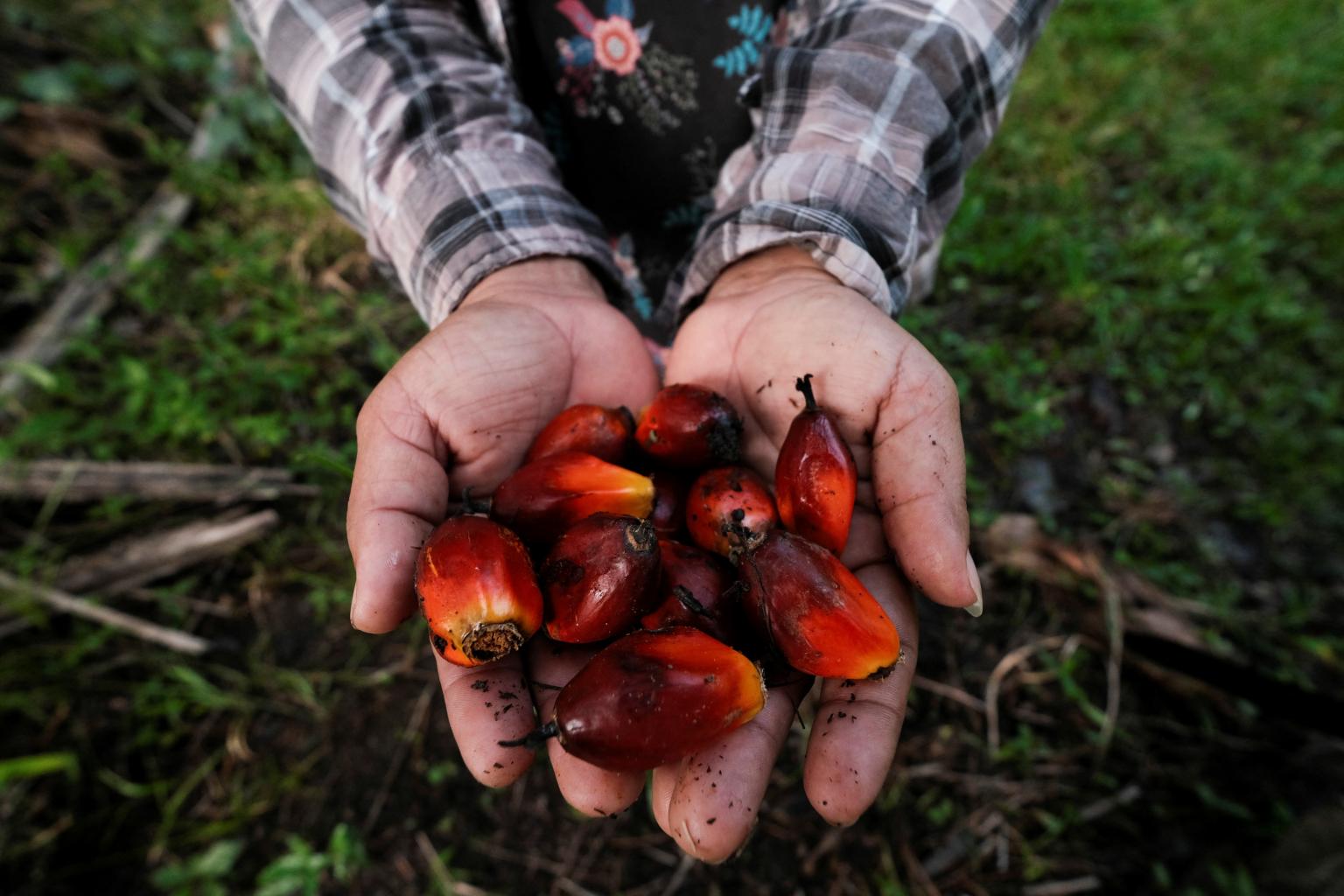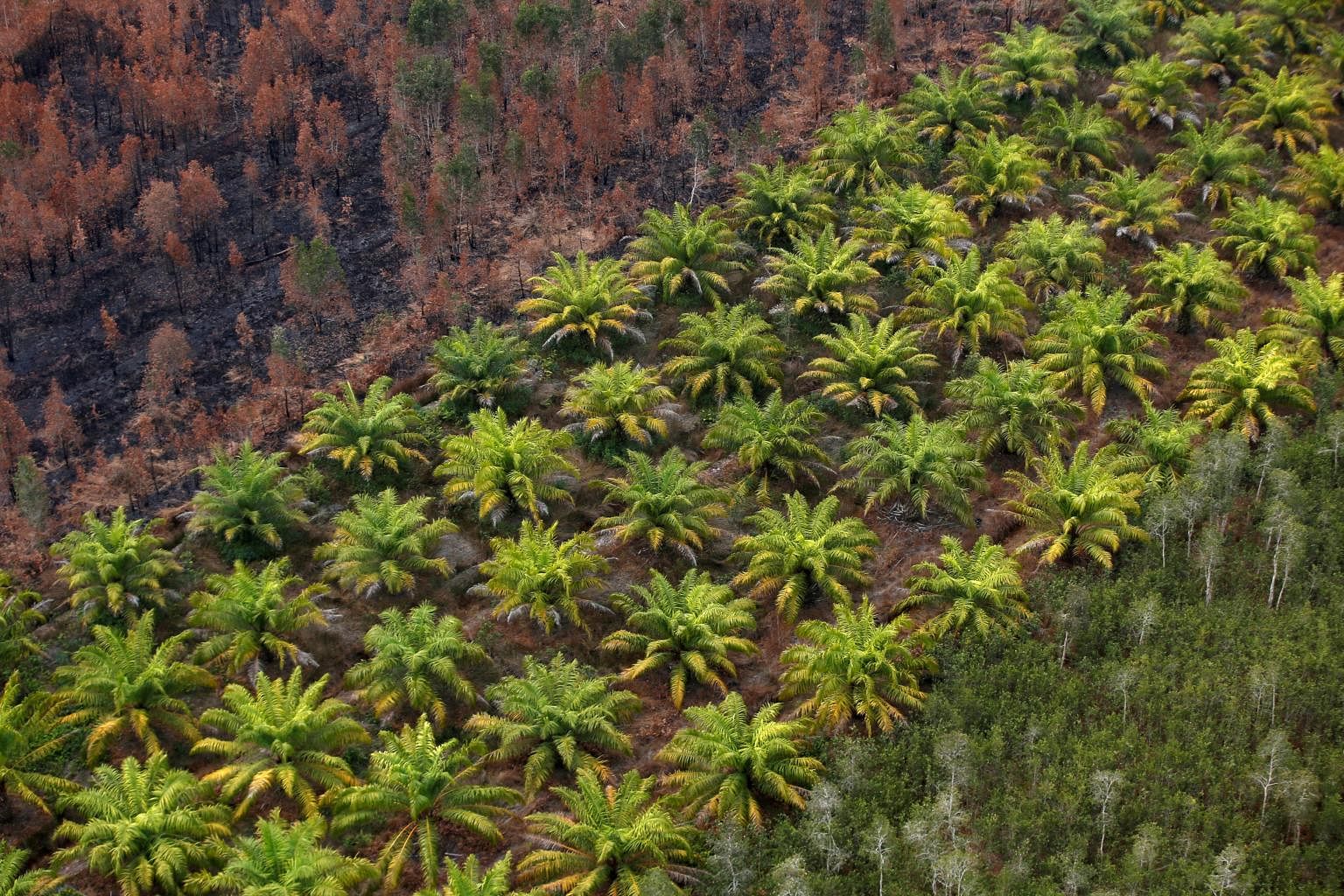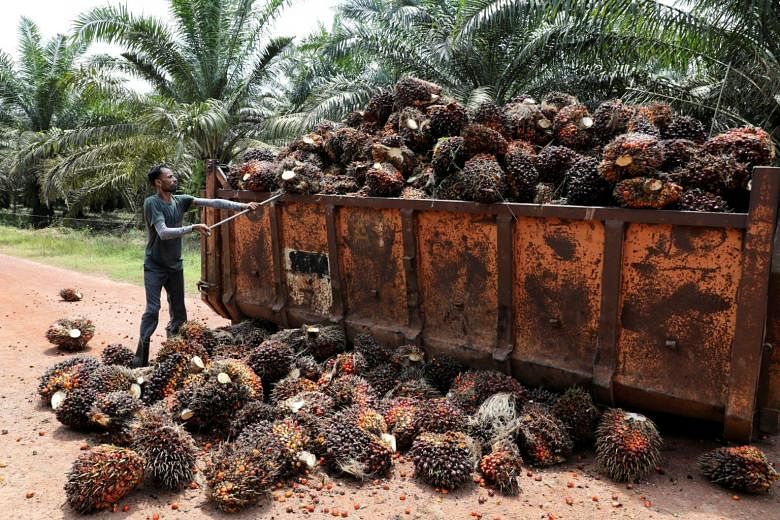KUALA LUMPUR (BLOOMBERG) - Palm oil bulls will likely hold sway into early 2022 as a chronic worker shortage in No. 2 grower Malaysia and heavier rains than usual in key growing areas disrupt production of the world's most-consumed edible oil.
That could keep prices elevated after a record year in 2021 when benchmark futures rocketed to an all-time closing high of RM5,071 (S$1,640) a tonne.
Although Malaysia is trying to expedite the arrival of much-needed foreign workers for its plantations, the spread of Omicron may scupper those plans, constrain harvesting and keep supplies tight.
In the first quarter, there may be attempts to reach new highs of around RM5,200 and beyond, as supply tightness persists at a time of low seasonal production and festive demand for Chinese New Year, said Mr Gnanasekar Thiagarajan, head of trading and hedging strategies at Kaleesuwari Intercontinental in Mumbai. "But in subsequent quarters, prices will be pressured by good supplies and could decline to RM3,975 or even lower."
Here are key things to watch in 2022:
1. Labour squeeze
The production shortfall in Malaysia, which pushed palm to the forefront of the rally in global edible oils this year, could linger into early 2022, as planters may not receive new workers before mid-year. That would further restrain output and potentially drive up benchmark futures in January and February, according to Mr Sathia Varqa, owner of Palm Oil Analytics in Singapore.
"If promises are kept, we should see boots on the ground in May-June," Mr Varqa said, which would push up production significantly. Output may climb 6 per cent to 19.2 million tonnes next year if workers return, he said.
Still, that forecast hinges on Omicron. A further spread of the new Covid-19 variant could see renewed lockdowns and travel restrictions, preventing new workers from reaching the plantations.
In top grower Indonesia, production patterns will likely return to normal next year, with first quarter yields the lowest, according to Mr Togar Sitanggang, vice-chairman of the Indonesian Palm Oil Association, known as Gapki. He forecasts an increase of around 3 per cent in full-year output to 48 million tonnes.
2. La Nina
The spotlight is currently on La Nina, a weather pattern that causes drier weather in the crop-growing areas of South America while bringing heavier rainfall to oil palm regions of Indonesia and Malaysia, as well as to Australia.
Agriculture investors are on their toes as La Nina threatens to roil global food markets in the coming months. It is already scorching parts of Brazil and Argentina, major producers of palm's rival oilseed, soybeans.

In Malaysia, continuous rain submerged several parts of Pahang and Selangor this month, disrupting harvesting and logistics on oil palm estates, and shutting operations at Port Klang, South-east Asia's second-biggest port for several days. The Malaysian meteorological department is forecasting a monsoon surge, which could trigger more rain through Jan 2.
3. Fertiliser costs
It is not just a lack of workers that is holding back production. Surging prices of fertilisers will force planters, especially smallholders, to cut application of the nutrient to oil palms and potentially derail the anticipated recovery in yields.
"Palm oil's cost of production based on current fertiliser prices is estimated to be 15 per cent to 20 per cent higher in 2022 from a year ago," said UOB Kay Hian director of Asean Plantation Research Leow Huey Chuen. "High crude palm oil prices may compensate the high cost, but getting fertilisers delivered on time is another challenge."
4. Demand uncertainty

Sky-high prices of palm oil could push up food inflation and erode demand from top buyers India and China. With palm getting more expensive, its discount to rival oils will be closely watched by price-sensitive buyers, who may switch to other vegetable oils.
"With prices having ruled above US$1,200 (S$1,600) in physical markets for the large part of 2021, buyers seemed to have got used to high prices," Mr Thiagarajan said. "But anything higher than US$1,300 could postpone buying in palm and compel them to look at alternatives like soy and sunflower oil."
Another thing to watch is whether consuming nations, including China and India, will do more to curb excessive price swings or speculation, said Mr Paramalingam Supramaniam, director at broker Pelindung Bestari in Selangor.
5. Biodiesel & sustainability

Indonesia's biodiesel mandate will remain a important driver of palm oil prices. The top producer will meet its biodiesel consumption target of 9.4 million kilolitres this year, the Indonesia Oil Palm Plantations Fund Management Agency said on Tuesday (Dec 28), as funds from export levies are channelled towards subsidising biodiesel. The goal for 2022 is 10.15 million kilolitres.
But aggressive palm oil campaigns and a push for deforestation-free products in the European Union will likely curb any growth in demand from the bloc, according to UOB Kay Hian's Mr Leow. The EU is capping the amount of palm oil directly used as biofuel feedstock at 2019 levels - estimated at around two million tonnes - before phasing it out by 2030.
Meanwhile, increased scrutiny on sustainable finance and on environmental, social and governance criteria will keep palm oil companies and consumer-goods manufacturers vigilant.

